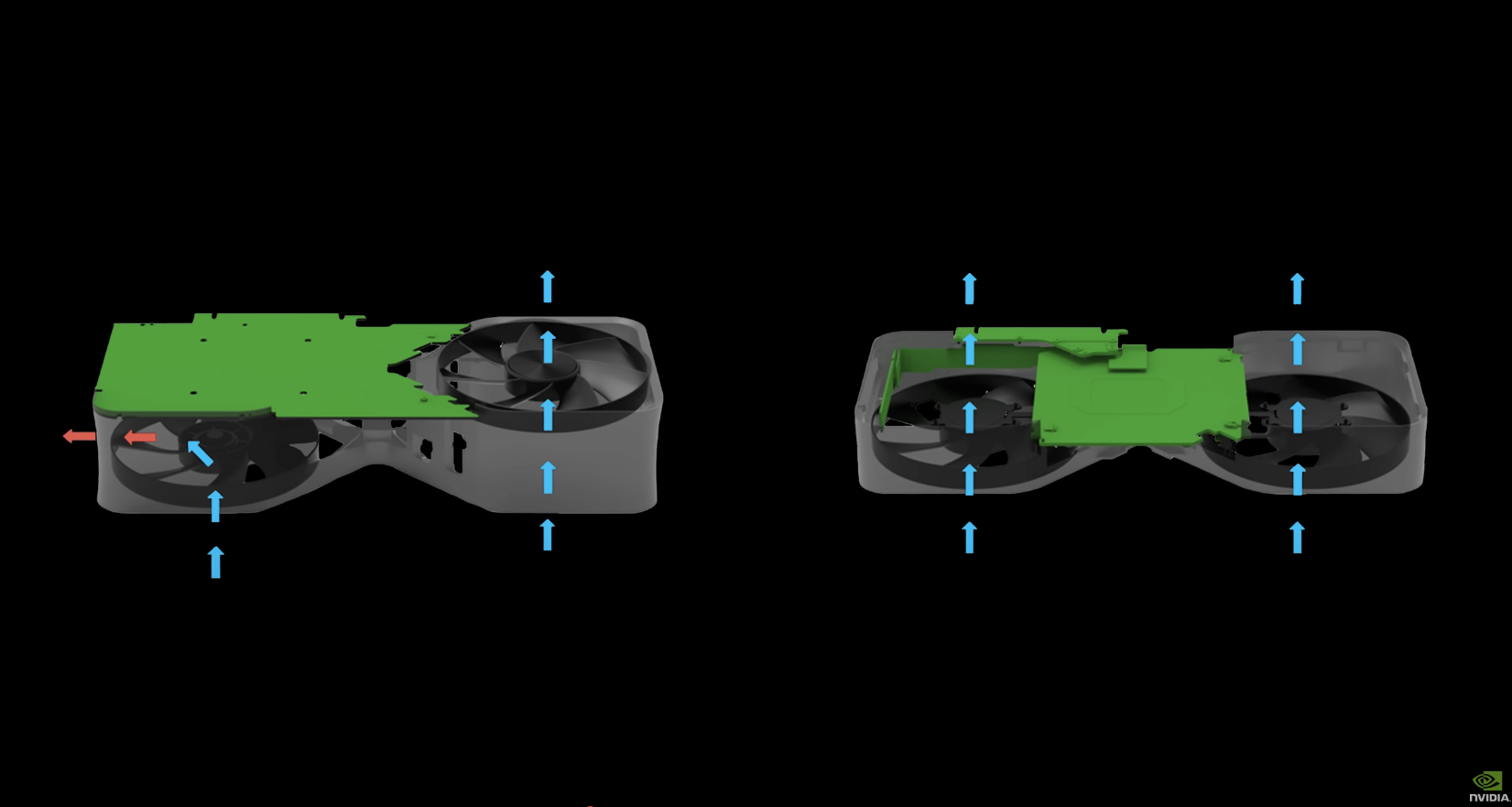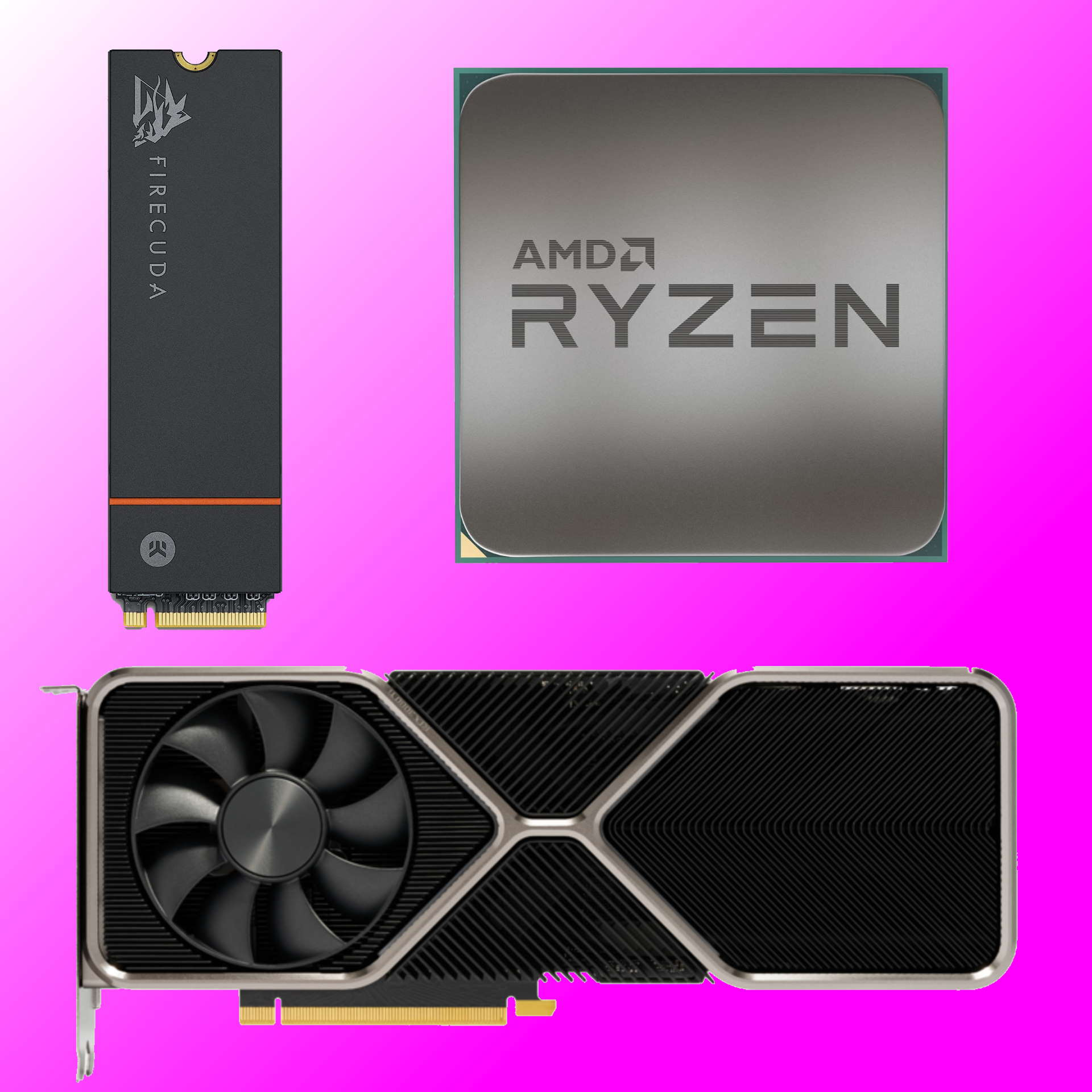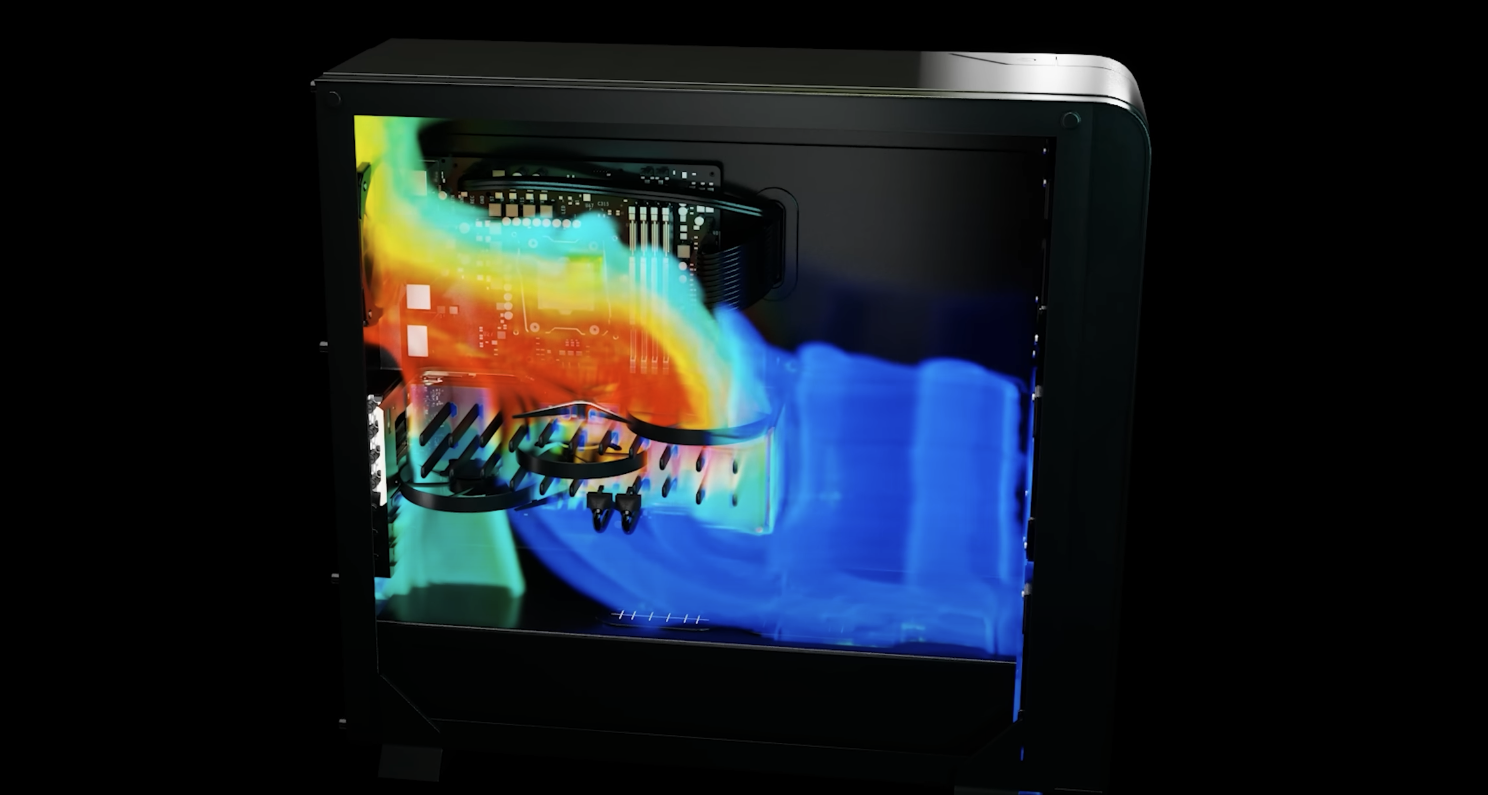The super-compact, two-slot design of the new Nvidia RTX 5090 was actually inspired by a massive four-slot prototype that was never released to the public. So, says Nvidia in a fascinating new deep-dive video into the design of the 5090’s innovative cooling solution.
“The mission of the 50 Series graphics card was to figure out new levels of performance, groundbreaking levels of performance in smaller form factors than we’d ever delivered them before,” Nvidia says.
The task looked like mission impossible, an Nvidia rep says. “We were going to have to shrink the main circuit board by 40% to 50% compared to the previous generation.”
The video explains how Nvidia’s cooling designs have evolved over the years, with the technology taking a huge leap with the RTX 3090 thanks to a shorter PCB or printed circuit board allowing some “blow through”.
“After 10 years of stagnation being stuck at 250, 260 watts, we jumped up to 350 watts in one generation,” Nvidia says.
But they also realised each generation of graphics card was getting larger and larger. Nvidia actually toyed with the idea of four-slot GPU cooler with a perpendicular PCB. By rotating the PCB on its side, Nvidia could have three fans and blow through a cooler across the entire size of the graphics card.
That was what Nvidia called “three-thirds” blow through. “It was big and unwieldy and only worked in a limited number of chassis”, however. And yet they still liked the idea and so adapted it for the new RTX 5090, resulting in a new “two-thirds blow through” concept.

That was enabled by splitting the PCB into three pieces, a mainboard with the GPU and memory dies, a PCIe daughter board that connects to motherboard and I/O daughter board with DisplayPort and HDMI connectors. The RTX 5090 also has a flexible PCB cable that connects the I/O board with the mainboard.
That flexible PCB cable alone uses a special fiberglass construction and took 25 iterations to get right. Then there was the TIM (thermal interface material). Nvidia went with liquid metal, but a key challenge was to make sure it’s reliable in all environments and all orientations. To achieve that, it had to be air tight, hermetically sealed so that it doesn’t oxidize or escape.
The RTX 5090 also has what Nvidia claims is the “first ever 3D vapour chamber” with heat pipes directly connected to sides of the vapour chamber. That makes it more dense and compact.
In fact, there are loads of other details in the video, all of which just make you realise how hard it must be for regular AIB makers to compete with the level of engineering and investment that go into these official Nvidia Founders Edition cards.
With that in mind, we’ll give the last word to Nvidia’s Hunter Denter, GTM Product Manager. “Something that makes me so proud of our team is the attention to detail we take on every aspect of the design. It’s a work of art.”

Best CPU for gaming: Top chips from Intel and AMD.
Best gaming motherboard: The right boards.
Best graphics card: Your perfect pixel-pusher awaits.
Best SSD for gaming: Get into the game first.











